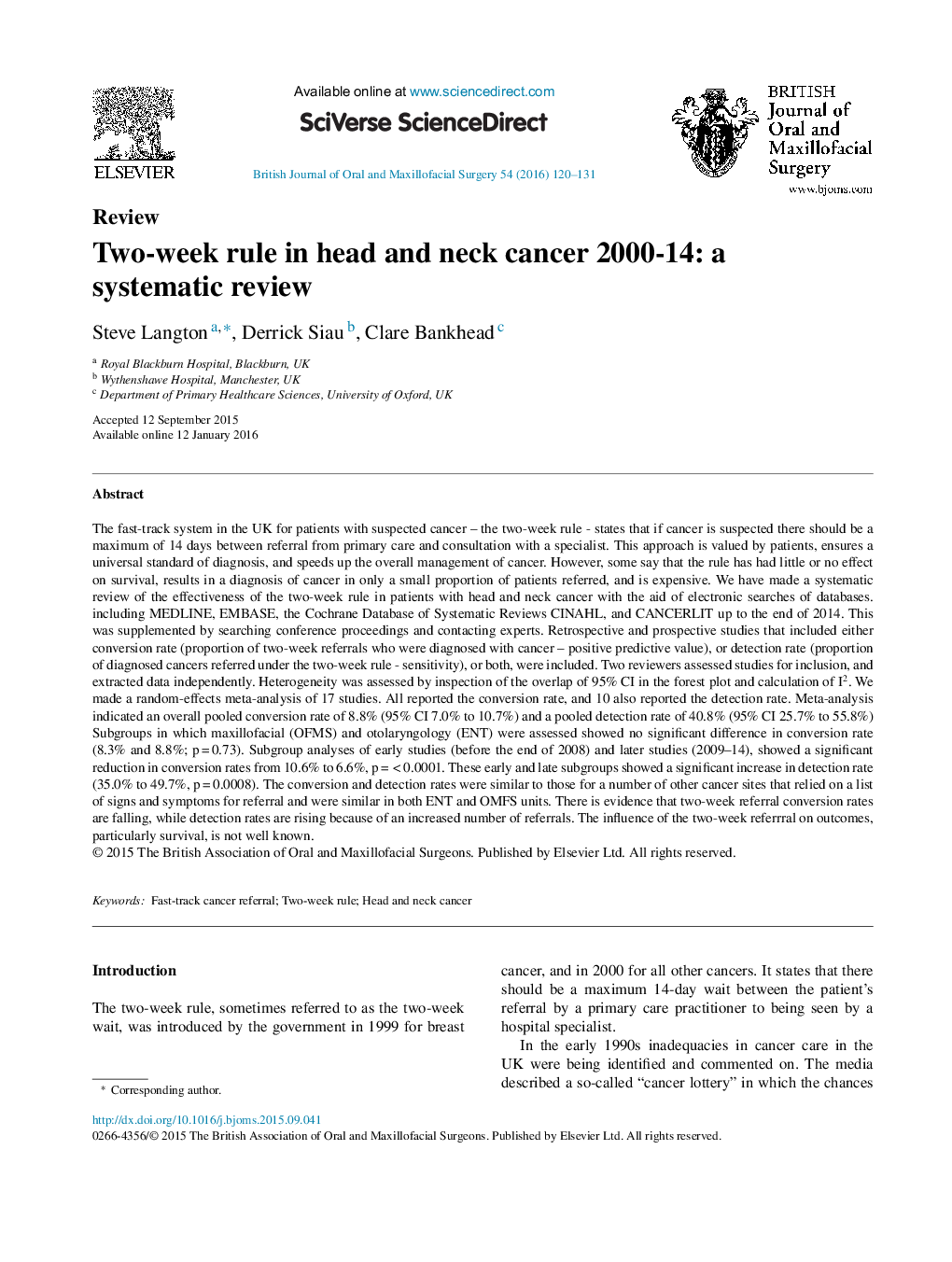| کد مقاله | کد نشریه | سال انتشار | مقاله انگلیسی | نسخه تمام متن |
|---|---|---|---|---|
| 3123362 | 1583705 | 2016 | 12 صفحه PDF | دانلود رایگان |
The fast-track system in the UK for patients with suspected cancer – the two-week rule - states that if cancer is suspected there should be a maximum of 14 days between referral from primary care and consultation with a specialist. This approach is valued by patients, ensures a universal standard of diagnosis, and speeds up the overall management of cancer. However, some say that the rule has had little or no effect on survival, results in a diagnosis of cancer in only a small proportion of patients referred, and is expensive. We have made a systematic review of the effectiveness of the two-week rule in patients with head and neck cancer with the aid of electronic searches of databases. including MEDLINE, EMBASE, the Cochrane Database of Systematic Reviews CINAHL, and CANCERLIT up to the end of 2014. This was supplemented by searching conference proceedings and contacting experts. Retrospective and prospective studies that included either conversion rate (proportion of two-week referrals who were diagnosed with cancer – positive predictive value), or detection rate (proportion of diagnosed cancers referred under the two-week rule - sensitivity), or both, were included. Two reviewers assessed studies for inclusion, and extracted data independently. Heterogeneity was assessed by inspection of the overlap of 95% CI in the forest plot and calculation of I2. We made a random-effects meta-analysis of 17 studies. All reported the conversion rate, and 10 also reported the detection rate. Meta-analysis indicated an overall pooled conversion rate of 8.8% (95% CI 7.0% to 10.7%) and a pooled detection rate of 40.8% (95% CI 25.7% to 55.8%) Subgroups in which maxillofacial (OFMS) and otolaryngology (ENT) were assessed showed no significant difference in conversion rate (8.3% and 8.8%; p = 0.73). Subgroup analyses of early studies (before the end of 2008) and later studies (2009–14), showed a significant reduction in conversion rates from 10.6% to 6.6%, p = < 0.0001. These early and late subgroups showed a significant increase in detection rate (35.0% to 49.7%, p = 0.0008). The conversion and detection rates were similar to those for a number of other cancer sites that relied on a list of signs and symptoms for referral and were similar in both ENT and OMFS units. There is evidence that two-week referral conversion rates are falling, while detection rates are rising because of an increased number of referrals. The influence of the two-week referrral on outcomes, particularly survival, is not well known.
Journal: British Journal of Oral and Maxillofacial Surgery - Volume 54, Issue 2, February 2016, Pages 120–131
